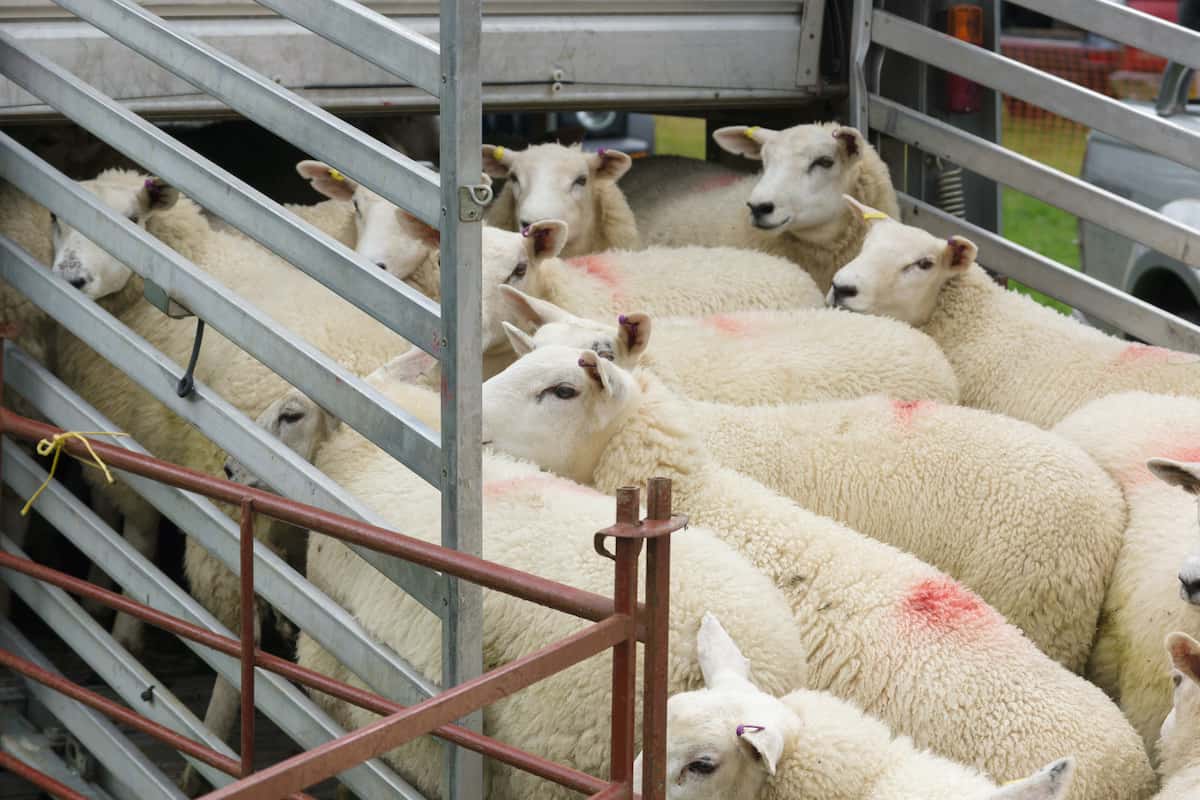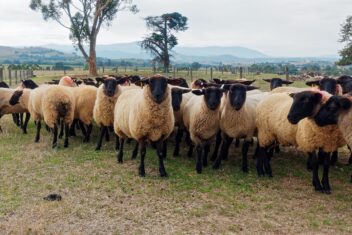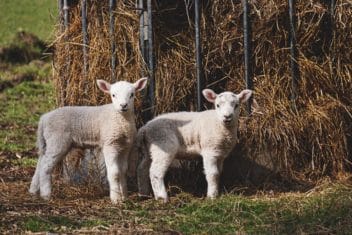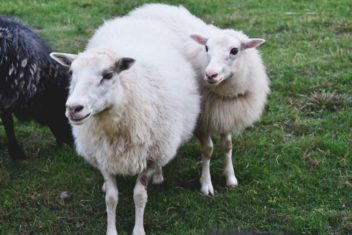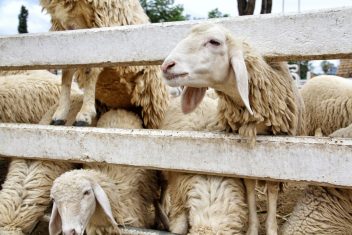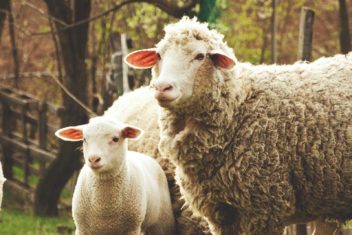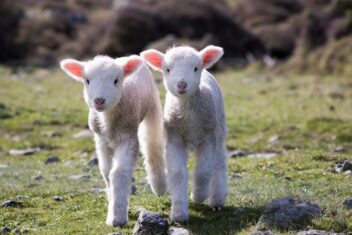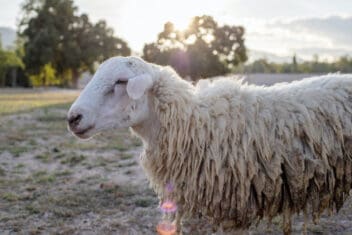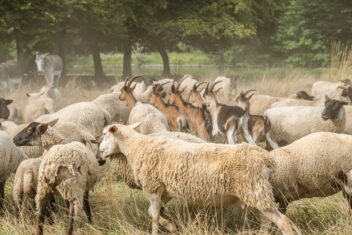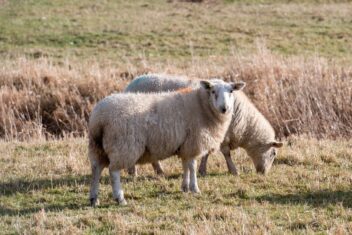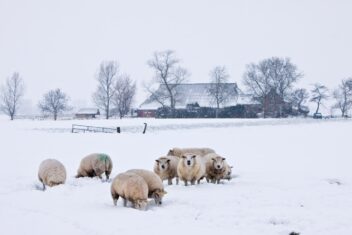A few days ago, a young man I used to teach reached out to me. He wanted to find out if we would be interested in selling some of our sheep.
My husband and I have put a lot of work into building our flock of 34 Icelandic sheep, and we are proud of that work.
It seems like only yesterday that we brought our first 5 sheep home, excited about the new opportunity, yet also incredibly inexperienced!
We were fortunate when we bought that first flock, that we worked with an upstanding gentleman who wasn’t trying to pull the wool over our eyes – pun intended – with our first flock.
He disclosed any issues that the sheep had, which were few. He also made sure we had everything we needed to get started.
However, that’s certainly not the case with all first-time sheep and lamb sales. It’s important that you do your research before taking the plunge. If you’re thinking about buying sheep or lambs, consider these tips before you take the plunge.
What to Consider Before Buying Sheep
1. Decide on Breed
Before you decide on a purchase, be sure to consider the sheep breed. Not all sheep breeds are alike. You will have to evaluate your ultimate goals as they relate to raising sheep. Do you want to raise sheep for meat or would you rather raise them for wool? Do you want them as pets, or would you like to use them to clear a section of land?
Whatever the case may be, having your end goals in mind will help you find the right breed.
If you’re having trouble deciding, you might have to visit a 4-H exhibit or a fair where you can see these breeds “in action.”
You also need to decide how much genetics matter to you.
Animals that are registered purebreds will always be more expensive, and if you plan on selling breeding stock later on, this is an essential characteristic to look for.
There’s nothing wrong with crossbred sheep, either, especially if you don’t plan on exhibiting them. Often, they are great sheep for starter flocks because they have such impressive hybrid vigor.
2. Available Space

You also need to calculate how much space you have available. Your pasture availability will be of key importance here. In most places, it’s not recommended that you raise any more than 4-5 ewes per acre. Ideally, you should allocate a bare minimum of 25-square-feet of indoor space per animal, too. I always recommend that you err on the higher side of that calculation, though.
Don’t assume you can get by with just one sheep, either. A single animal is a recipe for disaster. Invest in a few animals so that they can rely on each other and their natural flocking instincts.
Of course, before you get your sheep home, you will need to install good fencing. This will not only keep your sheep in, but it will help keep predators out. You don’t necessarily need to invest in a barn or similar indoor facility just yet.
However, if you plan on doing any on-farm lambing and live in a harsh climate, you will need protection from the elements.
Tips for Buying Lambs
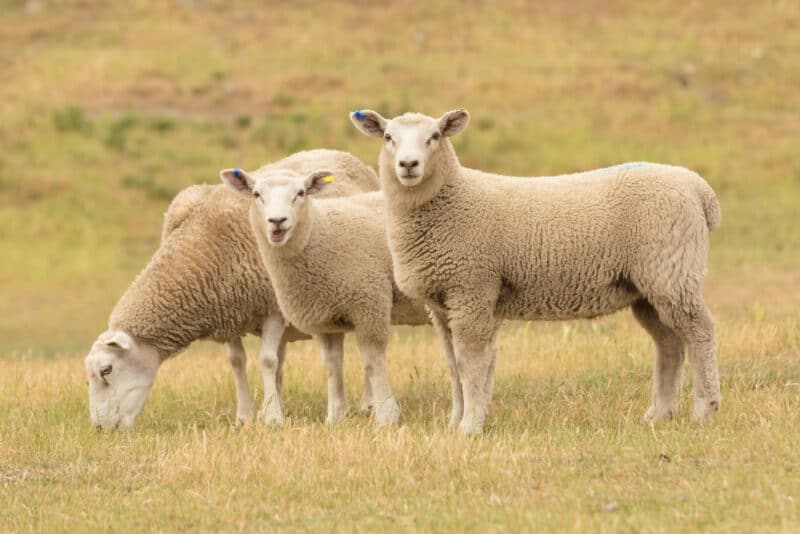
1. Avoid Auction Animals
Don’t buy sheep on a sale! Although you’ll likely get a bargain by buying sheep at an auction (or those that are otherwise heavily discounted), you’re going to be buying breeder’s problems, too.
Auctions are particularly ill-advised because they don’t allow you to see the original flock from which the animals came.
You don’t know the conditions in which they were raised, and sometimes, animals have been medicated before the auction so you won’t be aware of any behavioral issues, either.
2. Visit the Farm
Instead of buying a “discount” sheep or heading to an auction, head to a local farm. If you’re able to visit the farm, you’ll get a good idea of how the sheep were raised.
If the place is relatively clean and the sheep seem well-provided for, you probably don’t have to worry about how they were raised – or if you are going to be taking any health problems home with you.
3. Check Eyes and Feet
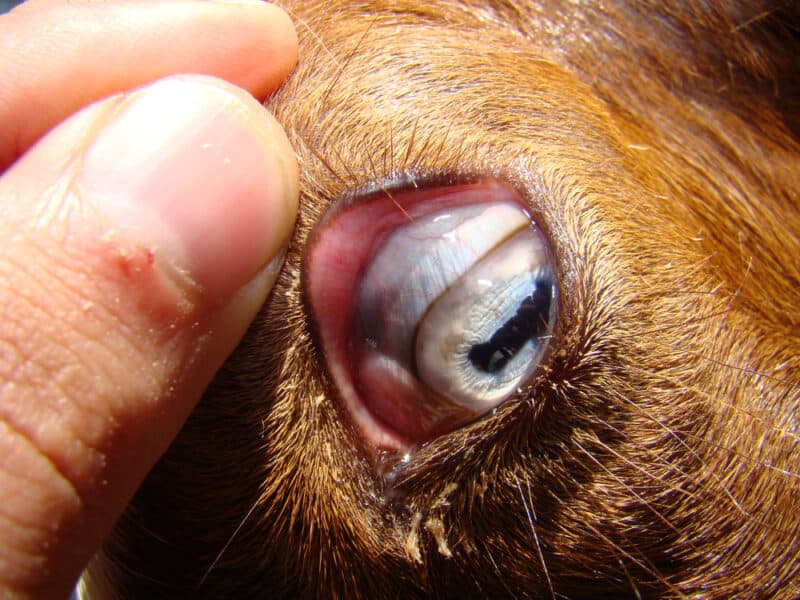
There are two key inspections you should make when buying sheep. Check their feet, and check their eyes.
The eyes can be a good indication of how parasite-ridden the sheep are. Sheep are very prone to intestinal parasites, even when raised in the most pristine conditions. You can use the FAMACHA scale to help evaluate whether they need to be dewormed and how anemic they are.
Similarly, you need to check their feet. Have the hooves been trimmed recently? Footrot is a very common sheep health issue and it can be challenging to eliminate, especially during warm weather.
If you notice any degree of rot on the feet of the sheep you intend to purchase, do not buy them. It is not worth it.
4. Get a Breeding History if Possible
Not all farmers keep detailed breeding records – and there’s nothing inherently wrong with that. Often, it’s not the case that a farmer is trying to hide something, it could be merely that he was not in the practice of recording genetic and lambing information.
However, it’s always worth it to ask a few questions, such as:
- Whether a ewe or ram has bred before
- What the outcomes of the breeding were
- The mothering characteristics of a ewe
- Rate of twinning, tripling, etc
5. Find Out the Reason for Selling
Always thoroughly investigate the seller’s motives for getting rid of his sheep. In some cases, they may be totally innocent – like he’s getting out of farming or switching to another livestock breed or species.
Other times, you may have a hard time getting a straight answer. If the seller refuses to disclose why he is getting rid of his sheep (or if, for whatever reason, you just don’t trust his answers), you may have to look elsewhere for your sheep.
Buying sheep with a shady background could mean that you wind up with animals that are sick, aggressive, or injured in some way.
6. Examine the Backbones, Ribs, and Hips
It’s usually pretty easy to tell whether sheep are healthy and well-fed just by examining their ribs, hips, and backbones. A sheep with minimal fat and muscle on the ribs and backbones is in low body condition and will be at a higher risk of disease and death.
On the flip side, you don’t want a sheep in which the backbone and ribs cannot be felt. Ideally, you want a sheep that has a good level of muscle and fat, with rounded ribs and hips and top of the backbone.
7. Check the Udders, Wool, and Teeth
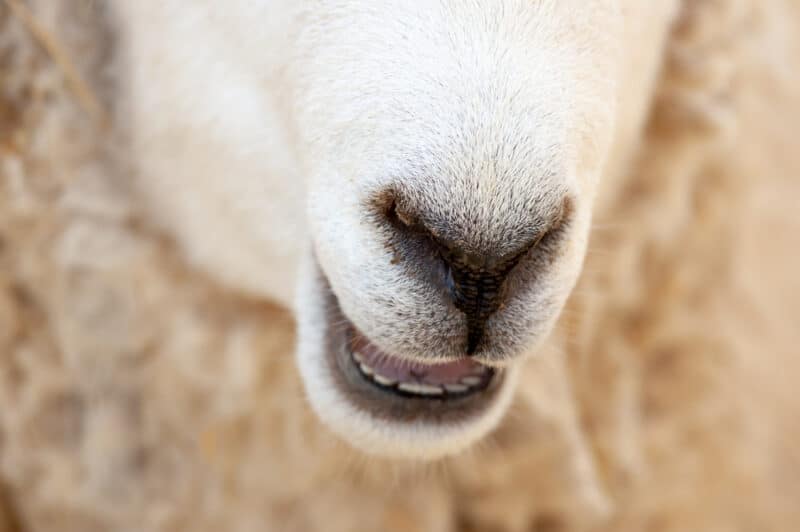
Finally, before you make the sale, check the wool, teeth, and udders of the animal. Have the sheep been sheared of late? Feel the texture, tugging a bit. Is this the texture and color of the wool you want?
As for the teeth, you will need to take some time to separate the sheep’s lips and make sure she has a row of 6-8 teeth on the bottom that meet evenly with the upper pad (they have no upper incisor teeth).
If there are any broken or badly aligned teeth, it could indicate that the ewe is very old – it will make it harder for her to feed later on.
If it’s a ewe that you are buying, flip her on her rump so you can check her udder. The udder should be small with two prominent nipples as long as she is not pregnant or nursing. There should not be any hard spots or lumpiness, as this can indicate that she had mastitis in the past. You will also have to watch out for odd-shaped or oddly-spaced teats, which can be a challenge when it comes to nursing little ones.
How Much Will I Pay When Buying Sheep?
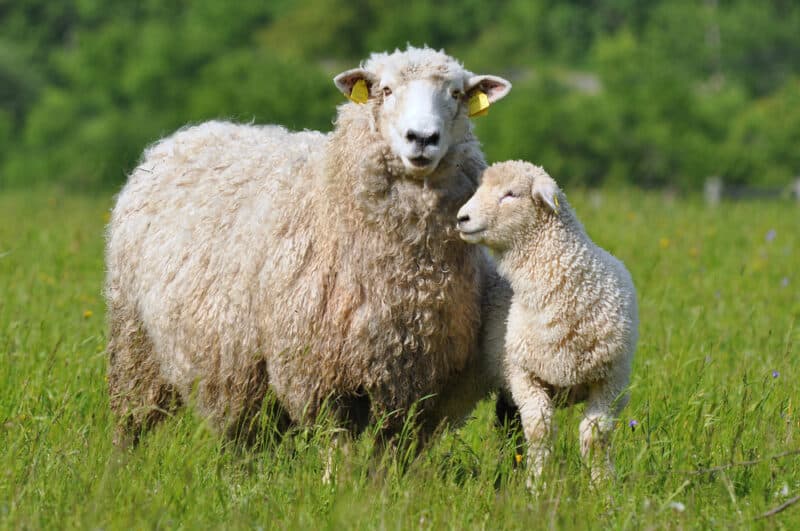
This is a tough question to answer, but it’s good to have a rough estimate in mind before you pull out your checkbook.
On average, you can usually buy a mature ewe for around $200-$250 (expect to pay more if she is registered, less if she is on the older side). Lambs can usually be purchased for $75-$150.
Should You Be Buying Lambs a Mature Sheep?
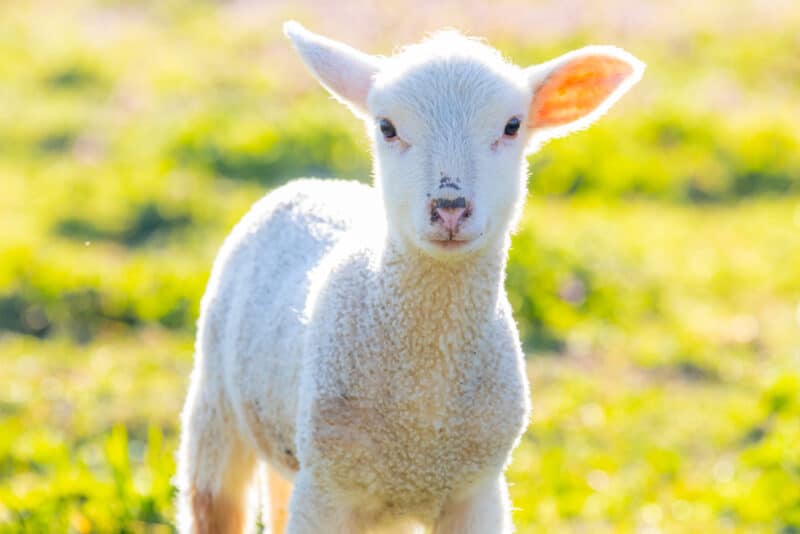
Can’t decide whether sheep or lambs are right for you? There are benefits and disadvantages to both but it helps to know the proper sheep terminology.
Lambs are sheep that are less than a year old. A yearling sheep is a sheep that is a year or two old, and after 2 years, that sheep is considered a ewe. In most cases, you should not breed a yearling ewe. They can be nervous and have additional birthing difficulties.
If you decide to purchase lambs, know that they will need to be wormed and rotated on pasture more often since they are more likely to acquire internal parasites.
That is because they have a smaller blood capacity. I recommend starting with slightly older sheep in most cases. However, if you decide to buy lambs, you will pay less money and you’ll get some great experience in the process, too.
A final option is to buy a bred ewe. Although you will pay a bit more for a bred ewe, you won’t have to house and feed a ram for an entire year. Your expenses will be lower and you won’t have to deal with the hassle, either.
Getting Your Sheep Home
When you get your sheep home, try to feed them a similar feed ration to what they were eating before. If you make any changes, do this gradually to make sure they are not stressed.
As we move forward and look into selling a few of our ewe-lamb pairs to the young man I mentioned earlier in the article, I’m excited about the opportunity to share this knowledge with the next generation of sheep farmers.
There is so much to enjoy about raising sheep and lambs – but it’s vital that you start with a healthy, happy flock. Hopefully, these tips will help you out as you set off on your journey in shepherding.
